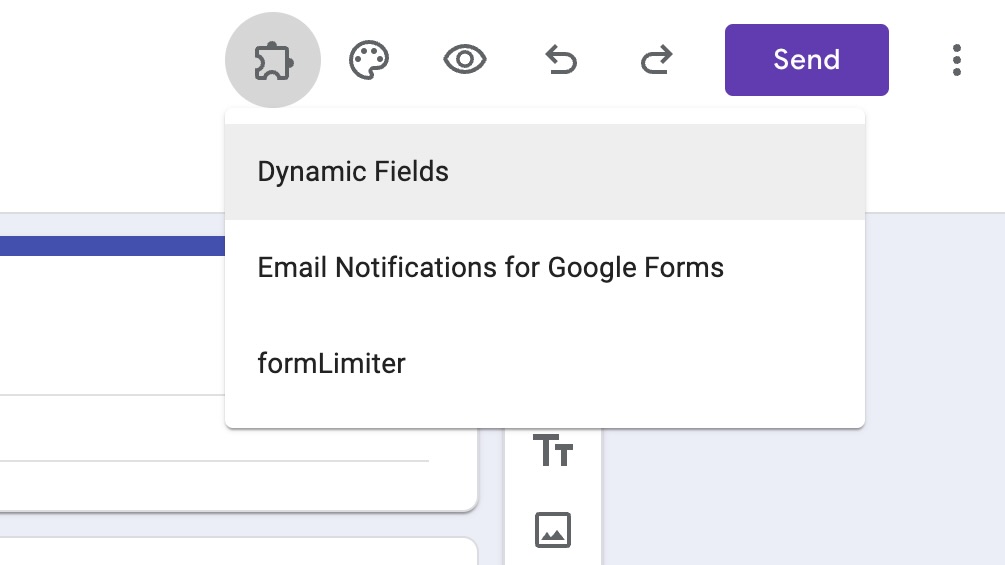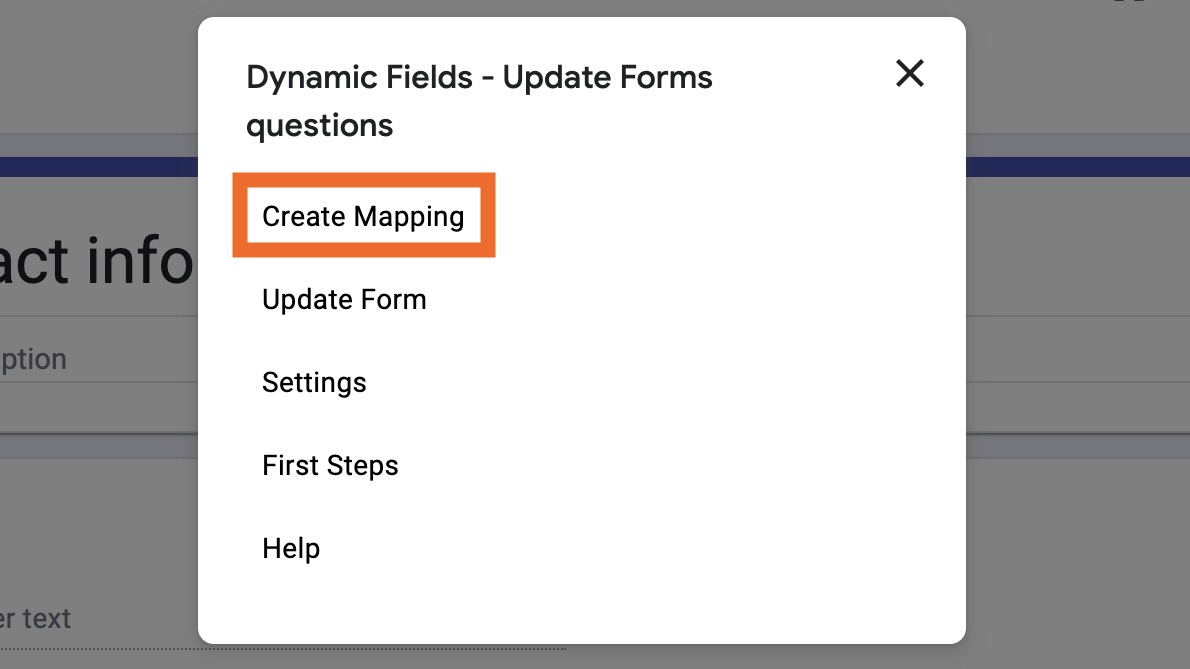How to use Dynamic Fields in Google Forms
Surveys have been around since 3800 BCE, when the ancient Babylonians developed the first census. Since then, surveys have evolved into one of the most effective ways to conduct research and gather feedback or responses, especially in the digital era.
Google Forms is one of the most popular free platforms for creating forms and surveys. Mobile-friendly, customizable, and collaborative, Google Forms offers a design that’s intuitive enough to allow anyone to create a survey — even those without much technical skill.
Google Forms also offers add-ons that add functionality and make form creation even easier. The Dynamic Fields add-on, for example, streamlines form creation by auto-populating answer options to forms and surveys. Here’s what you need to know about how to use Dynamic Fields.

Looking for the best alternative to Google Forms?
Jotform’s full-featured form-building solution is mobile-friendly and has the most integrations in the industry. Use it to collect payments, automate workflows, gather leads, and more.
Migrate Forms to Jotform
Why Dynamic Fields?
Google Forms’s Dynamic Fields add-on makes survey creation and management quick and painless by auto-populating answer options to your form questions from other data sources.
It doesn’t matter if a question is in multiple-choice, checkbox, or dropdown response format — the add-on can pull selections from data sources like Google Sheets, Calendar, Contacts, Groups, and Google Drive.
This opens up a range of possible uses:
- Sales inquiries. Create service requests or product order forms tied directly to a working inventory spreadsheet.
- Class signups. Allow students to pick the instructor they’d like to work with from a spreadsheet list.
- Event reservations. Streamline RSVPs by auto-populating a field with upcoming calendar items.
- Employee evaluation surveys. Rather than using the same survey for everyone, populate answer options according to employee roles or departments.
- Personalized customer feedback surveys. Use stored customer data like past purchases to add answer options in feedback surveys, ensuring that your clients feel seen.
- Market research updated in real time. For market research surveys, use dynamic fields to offer answer options that match the latest market trends. This way, you don’t get responses with outdated information.
- Medical care surveys. Populate patient surveys depending on what medical treatments the patient received or which specialist they saw.
- Project planning. Populate answer options in planning forms according to the project’s status or manager.
- Distributor assessments. Build forms with populated options to evaluate distributors. Options can be adjusted according to the distributor’s past ratings.
Google Forms’s Dynamic Fields also gives you the ability to
- Create forms faster. Creating surveys in Google Forms is simple, but Dynamic Fields offers a shortcut so you don’t have to type out answer options for every question. If a survey question is based on an existing Google spreadsheet or document, you can map it to your survey so you don’t have to retype the same answers in your form.
- Avoid redundant tasks. Similarly, if you’re creating a form and a corresponding spreadsheet from scratch, you can save yourself from duplicating work by adding all responses to a spreadsheet first. Once you’ve done that, you can write out the questions in Google Forms and map your spreadsheet columns to the appropriate questions to auto-populate the answer choices.
- Update data across products automatically. If you have forms tied to data that changes frequently (such inventory availability or event dates), Dynamic Fields eliminates the need to manually update your form every time the data changes. For example, if you use an event signup form on an ongoing basis, any changes made to your calendar will automatically be reflected in the form, so you never have to worry about users selecting unavailable dates.
How do I use Dynamic Fields?
Mapping data into Google Forms with Dynamic Fields may seem complex, but it’s a surprisingly intuitive process. Here’s how to do it:
- Install the add-on. Go to the Google Forms Dynamic Fields add-on page, and click the Install button. If you have multiple Google accounts, you’ll get a prompt to select the account you want to add it to.
Create forms seamlessly in Google Workspace with Form Builder by Jotform. Discover more now!
- Create or open the form you want to use with Dynamic Fields. Either write the question you want to map data to or decide which one you want to use.
- Click on the add-on icon (the puzzle piece) at the top of the form, then select Dynamic Fields.

- Select Create Mapping. In the dialog box that opens, select the question you’d like to map data to.

- Choose the type of data source you’d like to use (options include Google Sheet, Contacts, and Google Calendar). Then pick the specific data source to pull from. If your data source is a Google Sheet, you’ll also have to select which sheet and column to map data from. Note that you’ll only be able to choose data sources that are available in your Google Drive.

- Once you’ve selected your data source, press the Save button and close the box.
- Click on the add-on icon again, select Dynamic Fields, and this time click the Update Form option. You should see the answer fields to your survey questions auto-populate with the options from your data source. If there are any errors or text you want to change, you can edit each response individually in the form.

Pro Tip
If you’re looking for an alternative to Google Forms, Jotform offers even more robust form creation capabilities. Try it out to see how online forms can improve your workflows and help you reach new levels of productivity.






